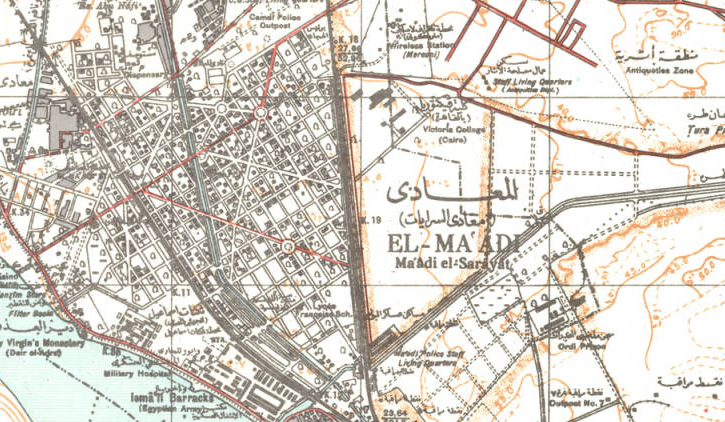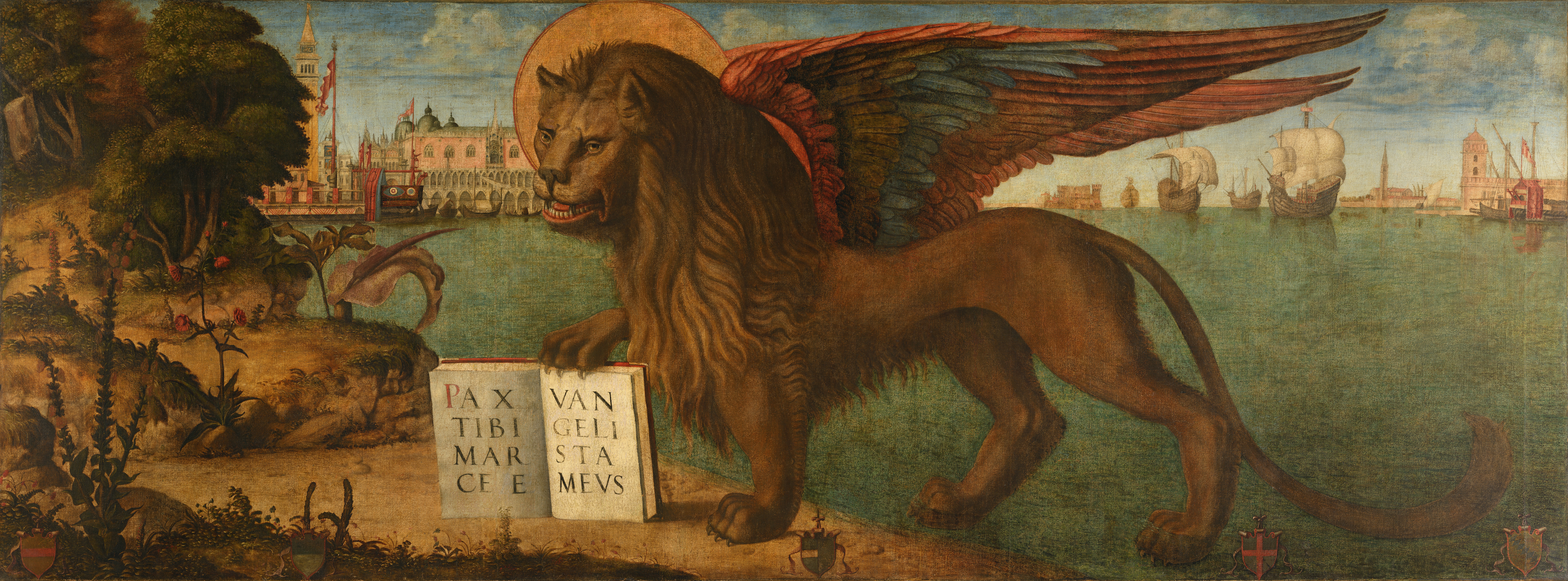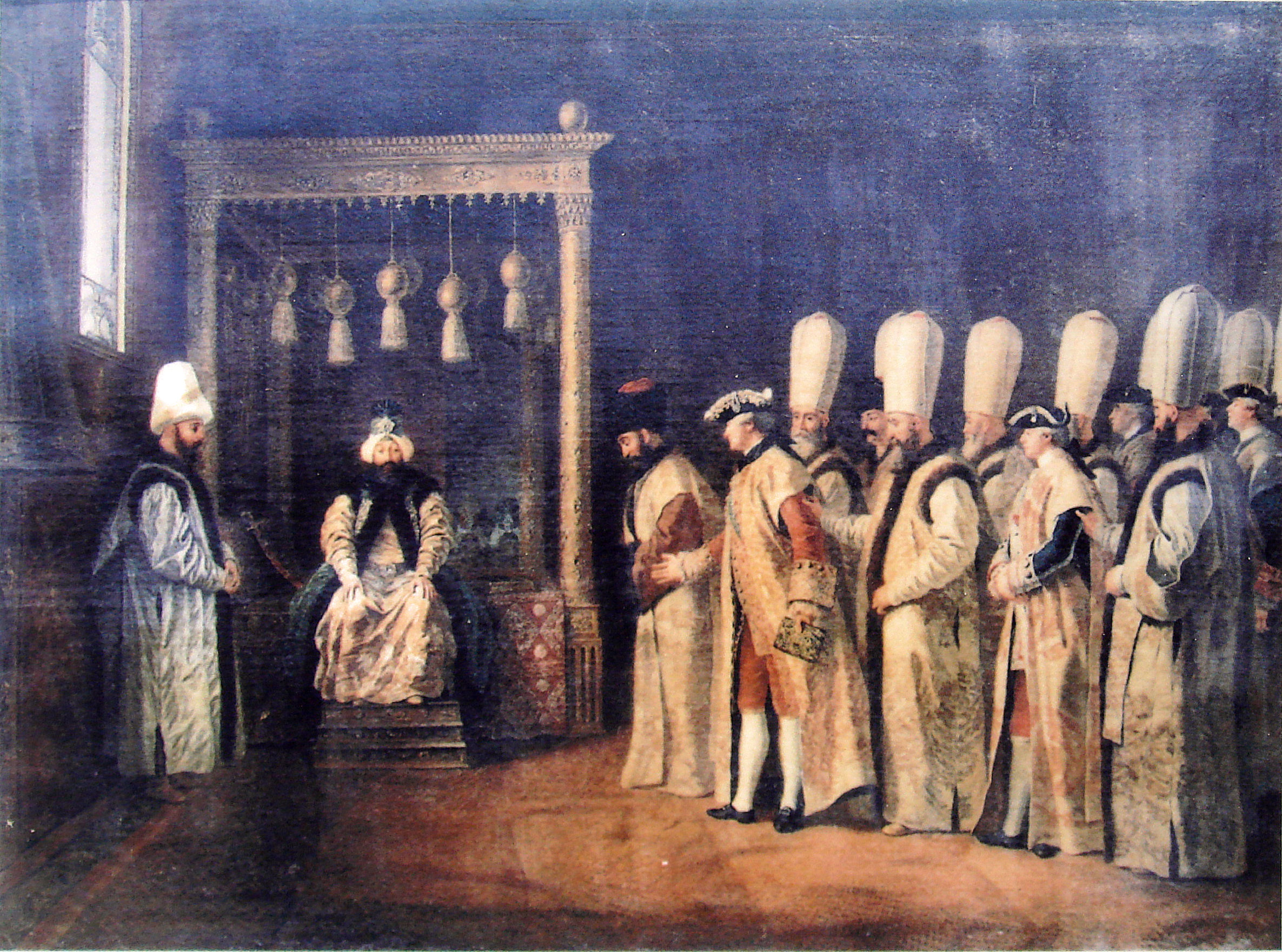|
Pope Mark VII Of Alexandria
Pope Mark VII of Alexandria (Abba Marcos VII), 106th Pope of Alexandria & Patriarch of the See of St. Mark. Pope Mark VII was born in the city of Klosna, in the district of El Bahnasa, and his lay name was Simeon. He joined the Monastery of Saint Anthony at a young age, then moved to the Monastery of Saint Paul the Anchorite, where he became a monk and was ordained a priest. When Pope John XVII departed, he was chosen to succeed him. Pope Mark VII was ordained Pope and Patriarch of Alexandria on Sunday, 24 Pashons, 1461 A.M. (30 May 1745 AD) on the day of the feast of the entry of Christ to Egypt. Pope Mark VII was contemporary of the Ottoman Sultans Mahmud I, Osman III, and Mustafa III. He ordained a general bishop over Upper Egypt to shepherd its Christians. He also ordained HG John (Yoannis) the 14th as the 104th Metropolitan of Ethiopia. Pope Mark VII occupied the Throne of Saint Mark for 23 years, 11 months, and 18 days. He departed on 12 Pashons 1485 A.M. (18 May ... [...More Info...] [...Related Items...] OR: [Wikipedia] [Google] [Baidu] |
Pope Of The Coptic Orthodox Church Of Alexandria
The Pope of the Coptic Orthodox Church ( cop, Ⲡⲁⲡⲁ, translit=Papa; ar, البابا, translit=al-Bābā), also known as the Bishop of Alexandria, is the leader of the Coptic Orthodox Church, with ancient Christian roots in Egypt. The current holder of this position is Pope Tawadros II, who was selected as the 118th pope on November 18, 2012. Following the traditions of the church, the pope is chairman and head of the Holy Synod of the Coptic Orthodox Patriarchate of Alexandria. The Holy Synod is the highest authority in the Church of Alexandria, which has between 12 and 18 million members worldwide, 10 to 14 million of whom are in Egypt. The pope is also the chairman of the church's General Congregation Council. Although historically associated with the city of Alexandria, the residence and Seat of the Coptic Orthodox Pope of Alexandria has been located in Cairo since 1047. The pope is currently established in Saint Mark's Coptic Orthodox Cathedral, insi ... [...More Info...] [...Related Items...] OR: [Wikipedia] [Google] [Baidu] |
Ottoman Empire
The Ottoman Empire, * ; is an archaic version. The definite article forms and were synonymous * and el, Оθωμανική Αυτοκρατορία, Othōmanikē Avtokratoria, label=none * info page on book at Martin Luther University) // CITED: p. 36 (PDF p. 38/338) also known as the Turkish Empire, was an empire that controlled much of Southeast Europe, Western Asia, and Northern Africa between the 14th and early 20th centuries. It was founded at the end of the 13th century in northwestern Anatolia in the town of Söğüt (modern-day Bilecik Province) by the Turkoman tribal leader Osman I. After 1354, the Ottomans crossed into Europe and, with the conquest of the Balkans, the Ottoman beylik was transformed into a transcontinental empire. The Ottomans ended the Byzantine Empire with the conquest of Constantinople in 1453 by Mehmed the Conqueror. Under the reign of Suleiman the Magnificent, the Ottoman Empire marked the peak of its power and prosperity, as well a ... [...More Info...] [...Related Items...] OR: [Wikipedia] [Google] [Baidu] |
18th-century Coptic Orthodox Popes Of Alexandria
The 18th century lasted from January 1, 1701 ( MDCCI) to December 31, 1800 ( MDCCC). During the 18th century, elements of Enlightenment thinking culminated in the American, French, and Haitian Revolutions. During the century, slave trading and human trafficking expanded across the shores of the Atlantic, while declining in Russia, China, and Korea. Revolutions began to challenge the legitimacy of monarchical and aristocratic power structures, including the structures and beliefs that supported slavery. The Industrial Revolution began during mid-century, leading to radical changes in human society and the environment. Western historians have occasionally defined the 18th century otherwise for the purposes of their work. For example, the "short" 18th century may be defined as 1715–1789, denoting the period of time between the death of Louis XIV of France and the start of the French Revolution, with an emphasis on directly interconnected events. To historians who expand ... [...More Info...] [...Related Items...] OR: [Wikipedia] [Google] [Baidu] |
Maadi
Maadi ( ar, المعادي / transliterated: ) is a leafy suburban district south of Cairo, Egypt, on the east bank of the Nile about upriver from downtown Cairo. The Nile at Maadi is parallelled by the Corniche, a waterfront promenade and the main road north into Cairo. There is no bridge across the Nile at Maadi; the nearest one is located at El Mounib along the Ring Road (Tarik El-Da'eri, en, The Round Road) on the way north to the downtown. Maadi's population was estimated to be 97,000 in 2016. The district is popular with international expatriates as well as Egyptians and is home to many embassies, as well as major international schools, sporting clubs, and cultural institutions such as the Supreme Constitutional Court of Egypt and the national Egyptian Geological Museum. Name Ma'ǎdi معادي is the plural form of the word ma'diyya, arz, معدية, which means "ferry"; hence, El-Ma'adi literally means "The ferries". There was a story that the name comes from a ... [...More Info...] [...Related Items...] OR: [Wikipedia] [Google] [Baidu] |
Pashons 12 (Coptic Orthodox Liturgics)
11 Pashons – Coptic calendar – 13 Pashons Fixed commemorations All fixed commemorations below are observed on 12 Pashons (20 May) by the Coptic Orthodox Church. Saints *Pope Mark VII of Alexandria (1485 A.M.), (1770) * Master Malati (1519 A.M.), (1803) Incidents *Appearance of a Cross of Light above Golgotha (351 AD) *Relocation of the relics of Saint John Chrysostom from Comana to Constantinople la, Constantinopolis ota, قسطنطينيه , alternate_name = Byzantion (earlier Greek name), Nova Roma ("New Rome"), Miklagard/Miklagarth (Old Norse), Tsargrad ( Slavic), Qustantiniya (Arabic), Basileuousa ("Queen of Cities"), Megalopolis (" ... (437 AD) *Consecration of the Church of Saint Demiana in El Zaafran ReferencesCoptic Synexarion Days of the Coptic calendar {{OrientalOrthodoxy-stub ... [...More Info...] [...Related Items...] OR: [Wikipedia] [Google] [Baidu] |
Saint Mark
Mark the Evangelist ( la, Marcus; grc-gre, Μᾶρκος, Mârkos; arc, ܡܪܩܘܣ, translit=Marqōs; Ge'ez: ማርቆስ; ), also known as Saint Mark, is the person who is traditionally ascribed to be the author of the Gospel of Mark. According to Church tradition, Mark founded the episcopal see of Alexandria, which was one of the five most important sees of early Christianity. His feast day is celebrated on April 25, and his symbol is the winged lion. Mark's identity According to William Lane (1974), an "unbroken tradition" identifies Mark the Evangelist with John Mark, and John Mark as the cousin of Barnabas. However, Hippolytus of Rome in ''On the Seventy Apostles'' distinguishes Mark the Evangelist (2 Tim 4:11), John Mark (Acts 12:12, 25; 13:5, 13; 15:37), and Mark the cousin of Barnabas (Col 4:10; Phlm 1:24). According to Hippolytus, they all belonged to the "Seventy Disciples" who were sent out by Jesus to disseminate the gospel (Luke 10:1ff.) in Judea. According ... [...More Info...] [...Related Items...] OR: [Wikipedia] [Google] [Baidu] |
Ethiopia
Ethiopia, , om, Itiyoophiyaa, so, Itoobiya, ti, ኢትዮጵያ, Ítiyop'iya, aa, Itiyoppiya officially the Federal Democratic Republic of Ethiopia, is a landlocked country in the Horn of Africa. It shares borders with Eritrea to the north, Djibouti to the northeast, Somalia to the east and northeast, Kenya to the south, South Sudan to the west, and Sudan to the northwest. Ethiopia has a total area of . As of 2022, it is home to around 113.5 million inhabitants, making it the 13th-most populous country in the world and the 2nd-most populous in Africa after Nigeria. The national capital and largest city, Addis Ababa, lies several kilometres west of the East African Rift that splits the country into the African and Somali tectonic plates. Anatomically modern humans emerged from modern-day Ethiopia and set out to the Near East and elsewhere in the Middle Paleolithic period. Southwestern Ethiopia has been proposed as a possible homeland of the Afroasiatic langua ... [...More Info...] [...Related Items...] OR: [Wikipedia] [Google] [Baidu] |
Christians
Christians () are people who follow or adhere to Christianity, a monotheistic Abrahamic religion based on the life and teachings of Jesus Christ. The words ''Christ'' and ''Christian'' derive from the Koine Greek title ''Christós'' (Χριστός), a translation of the Biblical Hebrew term ''mashiach'' (מָשִׁיחַ) (usually rendered as ''messiah'' in English). While there are diverse interpretations of Christianity which sometimes conflict, they are united in believing that Jesus has a unique significance. The term ''Christian'' used as an adjective is descriptive of anything associated with Christianity or Christian churches, or in a proverbial sense "all that is noble, and good, and Christ-like." It does not have a meaning of 'of Christ' or 'related or pertaining to Christ'. According to a 2011 Pew Research Center survey, there were 2.2 billion Christians around the world in 2010, up from about 600 million in 1910. Today, about 37% of all Christians live in the Am ... [...More Info...] [...Related Items...] OR: [Wikipedia] [Google] [Baidu] |
Upper Egypt
Upper Egypt ( ar, صعيد مصر ', shortened to , , locally: ; ) is the southern portion of Egypt and is composed of the lands on both sides of the Nile that extend upriver from Lower Egypt in the north to Nubia in the south. In ancient Egypt, Upper Egypt was known as ''tꜣ šmꜣw'', literally "the Land of Reeds" or "the Sedgeland". It is believed to have been united by the rulers of the supposed Thinite Confederacy who absorbed their rival city states during the Naqada III period (c. 3200–3000 BC), and its subsequent unification with Lower Egypt ushered in the Early Dynastic period. Upper and Lower Egypt became intertwined in the symbolism of pharaonic sovereignty such as the Pschent double crown. Upper Egypt remained as a historical region even after the classical period. Geography Upper Egypt is between the Cataracts of the Nile beyond modern-day Aswan, downriver (northward) to the area of El-Ayait, which places modern-day Cairo in Lower Egypt. The northern (d ... [...More Info...] [...Related Items...] OR: [Wikipedia] [Google] [Baidu] |
Mustafa III
Mustafa III (; ''Muṣṭafā-yi sālis''; 28 January 1717 – 21 January 1774) was the Sultan of the Ottoman Empire from 1757 to 1774. He was a son of Sultan Ahmed III (1703–30), and his consort Mihrişah Kadın. He was succeeded by his brother Abdul Hamid I (1774–89). Early life Mustafa was born at the Edirne Palace on 28 January 1717. His father was Sultan Ahmed III, and his mother was Mihrişah Kadın. He had a full brother named, Şehzade Süleyman. In 1720, a large fifteen day circumcision ceremony took place for Mustafa, and his brothers, princes Süleyman, Mehmed, and Bayezid. In 1730, after the Patrona Halil revolt, led to the deposition of his father Sultan Ahmed III, and the succession of his cousin Sultan Mahmud I, Mustafa, his father, and brothers were all locked up in the Topkapı Palace. In 1756, after the death of his elder half-brother Mehmed, he became heir to the throne. Reign Accession Mustafa ascended the throne on 30 October 1757, after the ... [...More Info...] [...Related Items...] OR: [Wikipedia] [Google] [Baidu] |
Osman III
Osman III ( ota, عثمان ثالث ''Osmān-i sālis''; 2 January 1699 – 30 October 1757) was the Sultan of the Ottoman Empire from 1754 to 1757. Early life Osman III was born on 2 January 1699 in the Edirne Palace. His father was Mustafa II and his mother was Şehsuvar Sultan. He was the younger half-brother of Mahmud I. When his father was deposed from the throne in 1703, he was taken back to Istanbul and imprisoned in the Kafes. Osman III lived in the Kafes for 51 years. He was secretly circumcised on 17 April 1705 with the other princes here. He was among the princes in Ahmed's entourage. He also later made trips to the sultan inside and outside the city. Together with his elder brother Mahmud's embassy on 1 October 1730, he became the biggest prince waiting for the throne. Reign Osman III lived most of his life as a prisoner in the palace, and as a consequence, he had some behavioural peculiarities when he took the throne. Unlike previous sultans, he hated m ... [...More Info...] [...Related Items...] OR: [Wikipedia] [Google] [Baidu] |
Mahmud I
Mahmud I ( ota, محمود اول, tr, I. Mahmud, 2 August 1696 13 December 1754), known as Mahmud the Hunchback, was the Sultan of the Ottoman Empire from 1730 to 1754. He took over the throne after the Patrona Halil rebellion and he kept good relations with the Mughal and Safavid Empires. Early life He was born at Edirne Palace on 2 August 1696, the son of Mustafa II (1664–1703); his mother was Saliha Valide Sultan. Mahmud I was the older half-brother of Osman III (1754–57). He developed a humped back. His father Mustafa II mostly lived in Edirne. Mahmud passed his childhood in Edirne. On 18 May 1702 he started his education in Edirne. When his father deposed himself from the throne he was brought to Istanbul and locked up in Kafes where he spent 27 years of his life. It is not known what kind of culture he acquired during this time, since he continued to play chess, write poetry, and deal with music. In addition for childhood and youth, there were dangers, especial ... [...More Info...] [...Related Items...] OR: [Wikipedia] [Google] [Baidu] |






